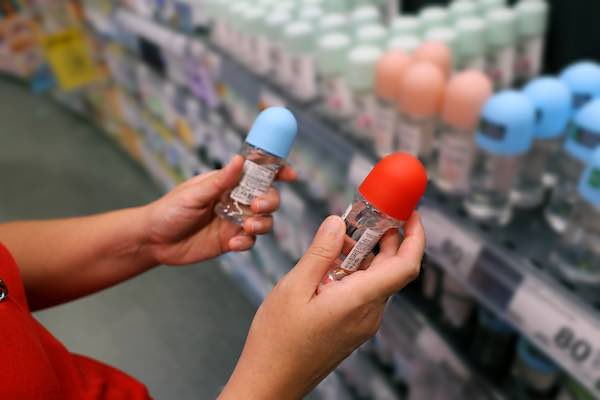Whole-Body Deodorant: What to Know
- Category: Health
- Published: Sunday, 30 June 2024 11:10
- Joanne Wallenstein
 (The following was submitted by Dr. Lauren Adams)
(The following was submitted by Dr. Lauren Adams)
When most of us think of deodorant, we think of our armpits – the usual source of body odor that can be embarrassing. But a wave of products being advertised as “whole-body deodorants” appears to be gaining traction in the marketplace through media ccoverage and a seemingly ceaseless series of TV commercials.
As the name implies, whole-body deodorants are for use on the whole body … up to a point. Dr. Lauren Adams, a board-certified dermatologist at WPHPA Westchester Dermatology and Mohs Surgery in Mount Kisco, notes that such products “should be used externally only,” even when using in the underwear area.
Indeed, she adds, using any product with a fragrance on or near one’s private parts should be done with caution. These are delicate areas and fragranced products can lead to skin irritation or allergy, even if they are being promoted as “natural” or “skin-safe.”
Dr. Adams says the same advice applies to any scented skincare products for those with sensitive skin, as patients with a  history of eczema or skin allergies are even more likely to develop rashes in areas where fragranced products are applied.
history of eczema or skin allergies are even more likely to develop rashes in areas where fragranced products are applied.
The dermatologist notes that deodorants and antiperspirants, while synonymous in some people’s minds, are actually quite different. In fact, deodorants are considered cosmetic, while antiperspirants are classified as an over-the-counter drug and are regulated by the Food and Drug Administration (FDA). Antiperspirants are typically manufactured using aluminum compounds that temporarily plug up the sweat gland and prevent perspiration – while deodorants simply address the odor.
Sweating is a normal body function, Dr. Adams notes, so people may want to try a deodorant before committing to an antiperspirant to gauge the results.
She further notes that body odors are typically caused not by the body parts, or even the sweat glands themselves – of which there are between 2 and 4 million throughout the body but just around 25,000 in the armpits. Instead, body odor production requires a second ingredient: bacteria.
There are two types of sweat glands on the skin. The apocrine sweat glands, which are associated with hair follicles, are concentrated in the groin and armpits. The make-up of this sweat, which is slightly oily and includes cholesterol and fats, when combined with bacteria in these areas produce the body odors with which we are all familiar.
The eccrine sweat glands, which are located diffusely throughout the remainder of the body, produce sweat that is mostly water, electrolytes, and some antimicrobial peptides. This sweat is only malodorous in areas with significant amounts of bacteria, which is common to happen under the breasts or on the feet.
Although Dr. Adams says she hasn’t encountered patients asking about whole-body deodorants, the fact remains that they are on the rise. Usually credited with kicking off the trend is Dr. Shannon Klingman, an OB/GYN in Minnetonka, Minnesota who, according to her website, developed women’s deodorant Lumé in 2017, followed by male-friendly Mando a few years later, in order to address other sources of body odor.
While Lumé and Mando may not yet be household names, big-name competitors are entering the marketplace. Secret Whole Body Deodorant and Old Spice Total Body Deodorant, both owned by Procter & Gamble, debuted in February; the Ban Total Body Sweat & Odor Collection followed in March; and Unilever’s Dove Men+Care line launched its Whole Body Deo in April.
For all that, Dr. Adams says washing oneself with antibacterial soap, and drying thoroughly, should be sufficient for most people – and if not, they should see their dermatologist for evaluation. “Some degree of body odor is normal, and part of being human,” she remarks. “But if these products leave people feeling more confident and better about themselves, I think that’s a positive.”
Dr. Lauren Adams is a dermatologist at WPHPA Westchester Dermatology and Mohs Surgery in Mount Kisco. To make an appointment, call 914-242-2020.
Health Matters
The original version of this article was published in Health Matters, a White Plains Hospital publication.







